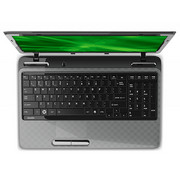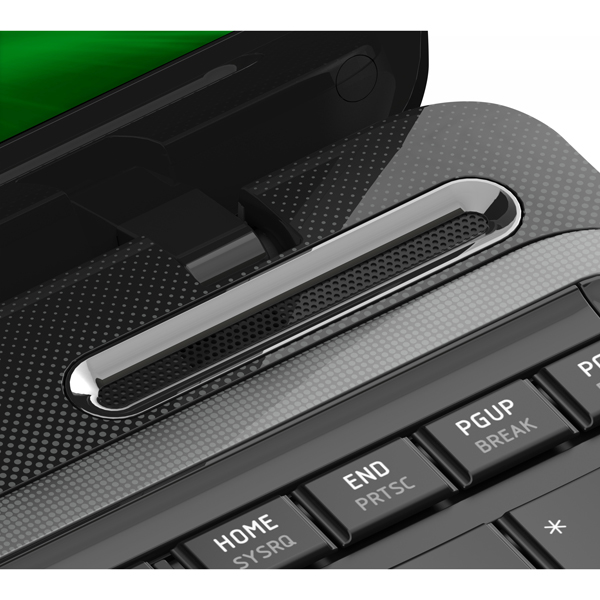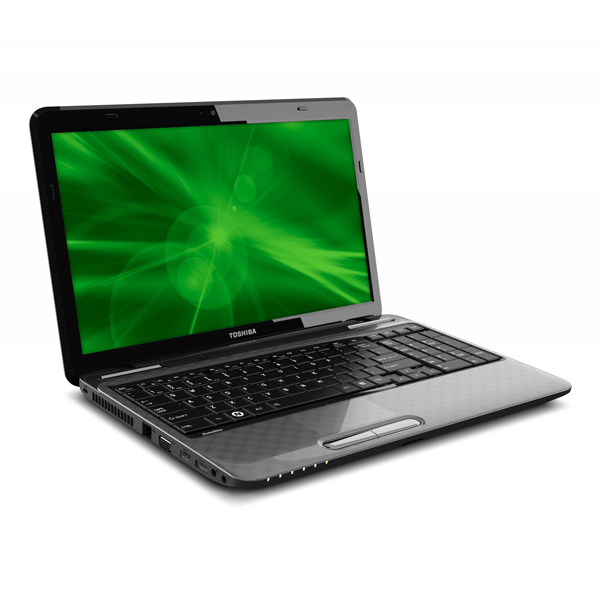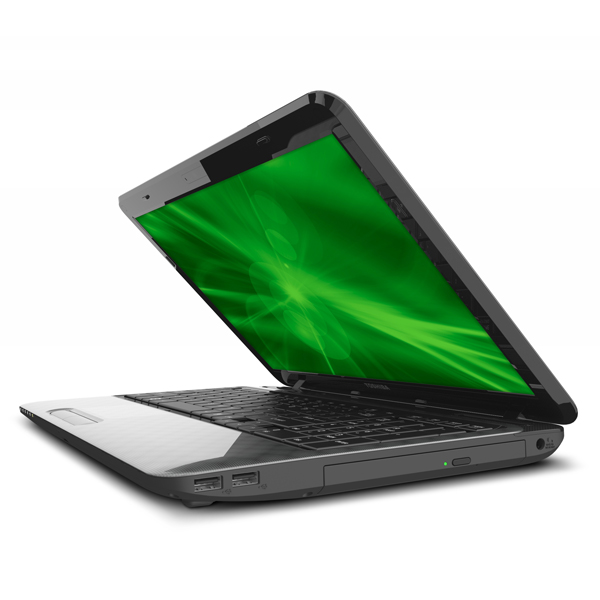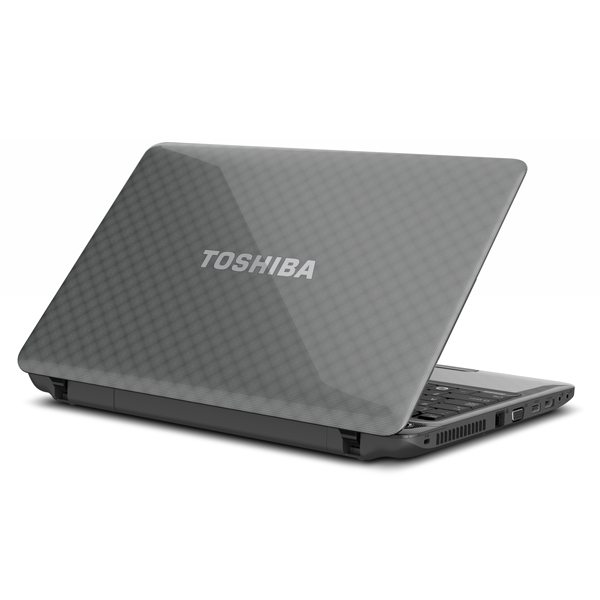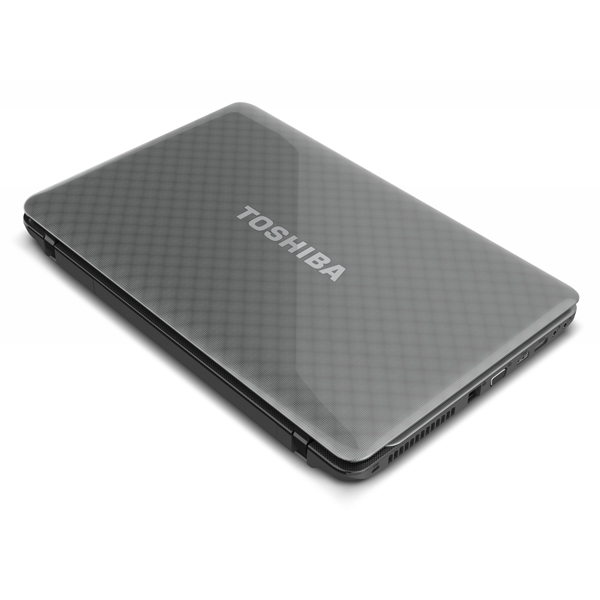Toshiba Satellite L755-S5258
Ausstattung / Datenblatt
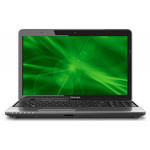
Preisvergleich
Durchschnitt von 2 Bewertungen (aus 2 Tests)
Testberichte für das Toshiba Satellite L755-S5258
Quelle: Notebookreview.com
 EN→DE Archive.org version
EN→DE Archive.org versionThe L755 fits the bill for a basic home computer but is uninspiring and ultimately tough to recommend because of its relatively high price. Its quality and feature set are as expected for a budget notebook and nothing more. The L755's highlights include a good keyboard and a decent set of speakers; it runs cool as well. It is fast enough for everything except 3D games. The only aspect of the L755 I truly didn't like was the glossy plastic; every visible inch of the notebook is covered. It may look good on a display shelf but fails the real world practicality test; cleaning it is a full-time job. There's a distinct lack of advanced ports (no USB 3.0); the touchpad buttons are also too noisy; lastly its 3.5-hour battery life is less than expected (we were looking for at least an hour more).
Einzeltest, online verfügbar, Lang, Datum: 10.11.2011
Bewertung: Gesamt: 60% Preis: 60% Leistung: 60% Ausstattung: 50% Mobilität: 60%
Quelle: PC World
 EN→DE Archive.org version
EN→DE Archive.org versionDon't let the Toshiba Satellite L755-S5258's low price fool you: This lapdop is a solid performer. Unfortunately, the rest of the design is not as solid--the notebook looks and feels cheap, the Function key, at least on our test unit, wouldn't work, and the trackpad is extremely small. All Toshiba has to do is make sure its parts are working and enlarge the trackpad (which should be easy--they had enough room for a number pad, after all), and the Satellite L755-S5258 would be an excellent budget machine.
Einzeltest, online verfügbar, Sehr kurz, Datum: 27.09.2011
Bewertung: Gesamt: 60%
Kommentar
Intel HD Graphics (Sandy Bridge): In den Celeron und Pentium Sandy Bridge (2. Generation Core) integrierte Prozessorgrafik. Technisch eine Intel HD Graphics 2000 (in Desktop CPUs) mit geringeren Taktraten. Die namensgleiche HD Graphics der Arrandale Prozessoren ist nicht baugleich!
Diese Karten können nur sehr alte und sehr anspruchslose 3D Spiele flüssig darstellen. Anwendungen wie Office, Internet surfen, Bildbearbeitung oder (SD) Videoschnitt sind jedoch ohne große Einschränkungen möglich.
» Weitere Informationen gibt es in unserem Notebook-Grafikkartenvergleich und der Benchmarkliste.
2410M: Auf Sandy Brige Architektur basierender Doppelkernprozessor mit 2.3 GHz (Turbo 2.6-2.9 GHz) mit integrierter Grafikkarte (650-1200MHz) und integriertem DDR3 Speicherkontroller.» Weitere Infos gibt es in unserem Prozessorvergleich Vergleich mobiler Prozessoren und der Prozessoren Benchmarkliste .
15.60":
15 Zoll Display-Varianten sind der Standard und werden für mehr als die Hälfte aller Notebooks verwendet.
Der Grund der Beliebtheit mittelgrosser Displays ist, dass diese Größe einigermaßen augenschonend ist, hohe Auflösungen oftmals erlaubt und damit Detailreichtum am Bildschirm bietet und dennoch nicht allzu viel Strom verbraucht und die Geräte noch halbwegs kompakt sein können - also schlicht der Standard-Kompromiss.
» Prüfen Sie in unserer DPI Liste, welche Displays wie fein aufgelöst sind.
2.6 kg:
Mit diesem Gewicht ist ein Laptop eher schwerer als der Durchschnitt. Geräte in diesem Bereich glänzen eher mit Bildschirmgröße und Leistung als mit Mobilität.
Toshiba: Die Toshiba Corporation ist ein japanischer Misch- bzw Technologiekonzern. Die Firma entstand 1939 und 1978 wurde Toshiba offizieller Firmenname. Zu den Produkten und Dienstleistungen des Unternehmens gehören Energie, industrielle und soziale Infrastruktursysteme, Aufzüge und Rolltreppen, elektronische Komponenten, Halbleiter, Festplatten, Drucker, Batterien, Beleuchtung, Logistik und Informationstechnologie. Toshiba war einer der größten Hersteller von Personal Computern, Unterhaltungselektronik, Haushaltsgeräten und medizinischen Geräten.
60%: Eine so schlechte Bewertung ist selten. Es gibt nur wenige Notebooks, die noch schlechter beurteilt wurden. Die urteilenden Websites geben hier keine Kaufempfehlung ab.
» Lesen Sie auch unsere Notebook-Kaufberatung.


 Deutsch
Deutsch English
English Español
Español Français
Français Italiano
Italiano Nederlands
Nederlands Polski
Polski Português
Português Русский
Русский Türkçe
Türkçe Svenska
Svenska Chinese
Chinese Magyar
Magyar